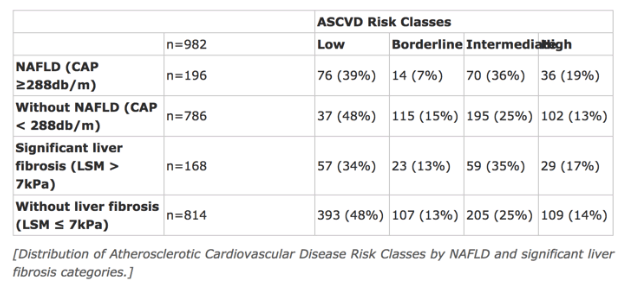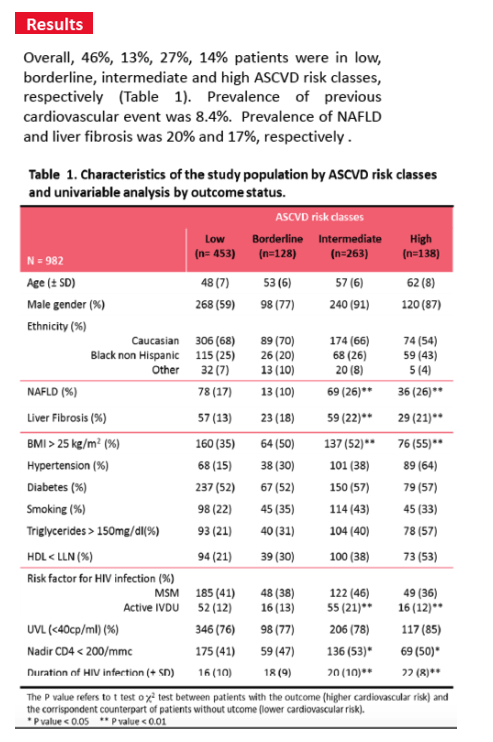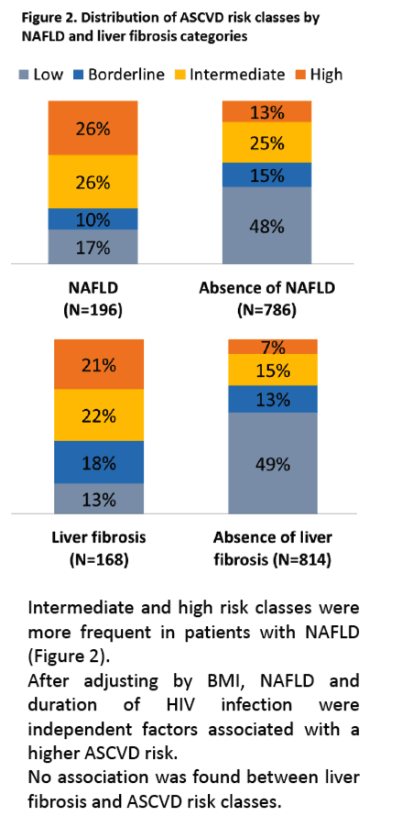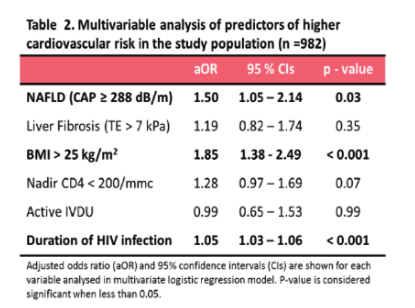 |
 |
 |
| |
Non-Alcoholic Fatty Liver Disease is a significant
predictor of cardiovascular risk in HIV-mono-infected patients
|
| |
| |

G. Mazzola1, A. Cervo1, G. Sebastiani2, G. Guaraldi3, S. Mazzola4, T. Krahn2, J. Milovic3, C. Gioé1, P.Colletti1, A. De Luca1, S. Petta5, A. Cascio1. 1 Infectious Diseases Unit, University Hospital of Palermo, Italy. 2 Division of Gastroenterology and Hepatology, McGill University Health Center, Montreal, Canada. 3Infectious Diseases Clinic, University of Modena and Reggio Emilia School of Medicine, Italy. 4Clinical Epidemiology and Cancer Registry Unit, University Hospital of Palermo, Italy. 5Gastroenterology and Hepatology Unit, University Hospital of Palermo, Italy

Program Abstract
Purpose: The association between non-alcoholic fatty liver disease(NAFLD) and cardiovascular disease in the general population has been largely confirmed while in people living with HIV(PLWH) has not been assessed yet. We aimed to evaluate the impact of NAFLD and liver fibrosis on cardiovascular risk in PLWH.
Method: 982 HIV-monoinfected patients from three retrospective cohorts(LHivPA in Palermo; LIVEHIV in Montreal; MHMC in Modena) were included. All patients underwent FibroScan. NAFLD was defined as controlled attenuation parameter(CAP) ≥288db/m in the absence of significant alcohol intake (< 20g/die), which was excluded for all the included patients. Significant fibrosis was defined as liver stiffness measurement(LSM) >7kPa.
Cardiovascular risk was evaluated with Atherosclerotic Cardiovascular Disease(ASCVD) Risk Estimator, according to American College of Cardiology and categorized as: low if < 5%, borderline if 5%-7.4%, intermediate if 7.5%-19.9% and high if ≥20%. Patients with previous cardiovascular events were considered as high risk.
Results: The mean age of the population was 53 years, 74% were males, 450(46%), 130(13%), 264(27%) and 138(14%) were in low, borderline, intermediate and high ASCVD risk classes, respectively. The prevalence of previous cardiovascular events was 8.4%. NAFLD and liver fibrosis were found in 20% and 17% of the population, respectively. The distribution of ASCVD risk classes by NAFLD and fibrosis category is depicted in the Table.
Overall, intermediate and high risk classes were more frequent in patients with steatosis(p< 0.001). Notably, by multivariate ordinal regression analysis, NAFLD(OR 1.50, 95%CI 1.05-2.14, p=0.03), BMI≥30 (OR 1.85, 95%C.I. 1.38-2.49, p< 0.001) and time since HIV diagnosis(OR 1.03, 95%CI 1.03-1.06, p< 0.001) were independent factors associated with a higher ASCVD risk. No association was found between fibrosis and ASCVD risk classes.
Conclusion: NAFLD is a strong predictor of cardiovascular disease in PLWH. Early recognition of NAFLD may allow to implement life-style modification and treatment to prevent cardiovascular disease.





|
| |
|
 |
 |
|
|